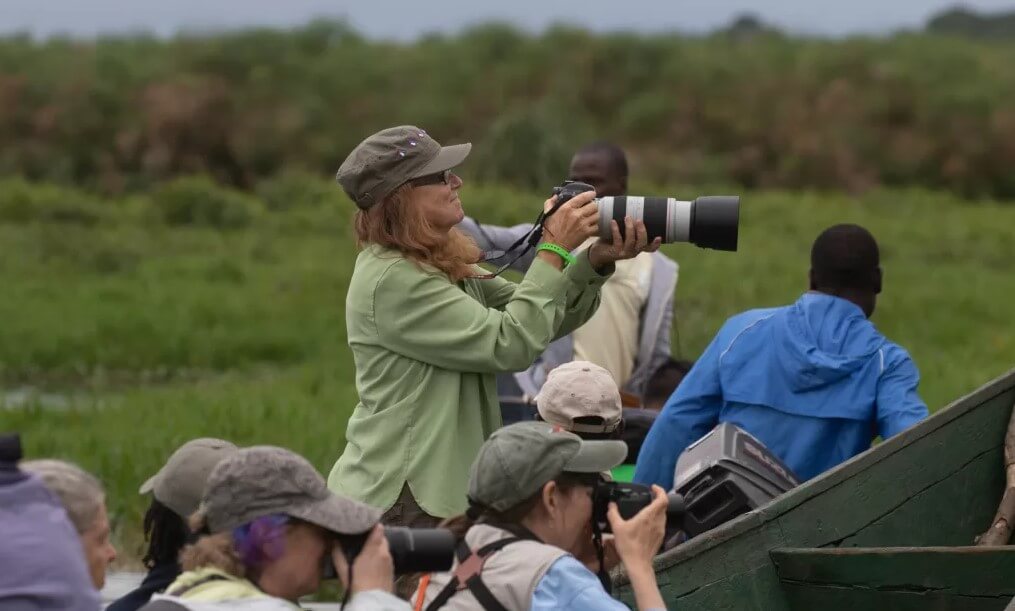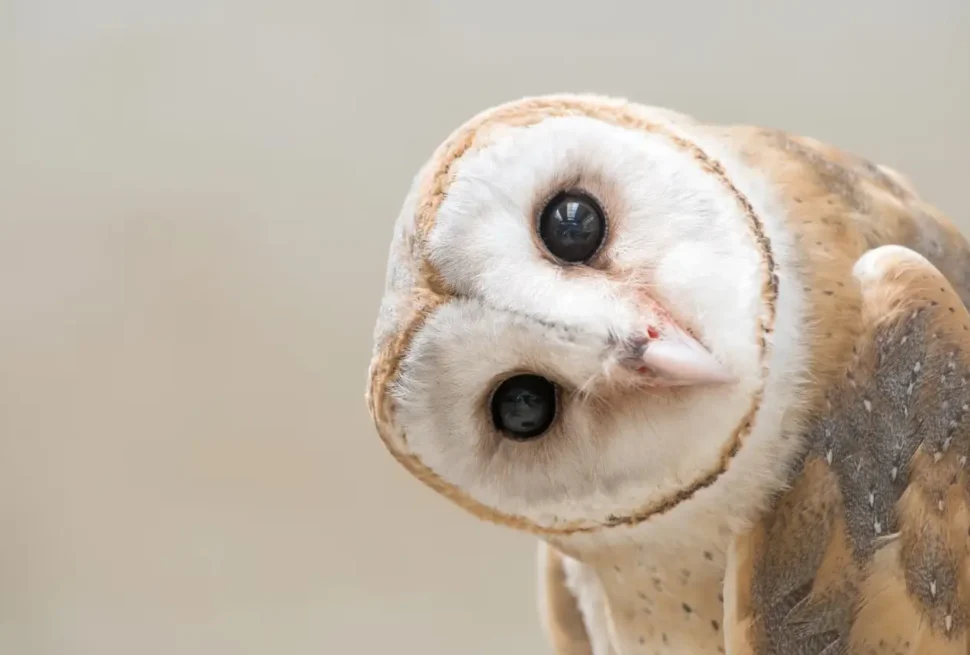Most travelers assume bird watching in Uganda is a niche hobby for scientists or hardcore twitchers. It isn’t.
Uganda is one of the richest birding destinations on Earth, home to more than half of Africa’s bird species, and you don’t need to be an expert or wealthy to experience it.
Still, the cost question matters. Bird watching here isn’t about paying for access; it’s about paying for time, expertise, and context.
Key Takeaways
- A full birding trip in Uganda costs between $250 and $700 per day per person, depending on comfort level and duration.
- National park entry fees range from $40 to $100 per day, varying by park and activity.
- Private bird guides typically charge $50–$150 per day, depending on specialization.
- Budget choices are often about trade-offs in time, habitat diversity, and access, not only luxury.
- Multi-day packages (like 22 Days Uganda Birding) usually offer better value than piecing trips together.
Breaking Down Bird Watching Costs in Uganda
Uganda’s birding economy is layered. You’re not just paying for park access or a driver; you’re paying for the skill of interpretation—the ability to spot a green-breasted pitta hidden in a shadowed canopy or distinguish a forest robin by sound alone.
1. Park Entry Fees and Permits
Most of Uganda’s top birding sites lie inside protected areas managed by the Uganda Wildlife Authority (UWA).
These include Bwindi Impenetrable National Park, Murchison Falls National Park, Queen Elizabeth National Park, and Mgahinga Gorilla National Park.
In 2025, the UWA entry fees (valid for 24 hours) are:
- Foreign non-resident adults: $40–$50 per day
- Foreign residents: $30–$40 per day
- East African citizens: UGX 20,000–25,000 per day
Certain habitats, like the Mabamba Swamp (for the Shoebill) or Ziwa Rhino Sanctuary, may charge a separate community or conservation fee, usually between $10 and $20.
If your itinerary includes restricted areas or specialized birding zones, you may also need activity permits. These are typically $30–$60, and sometimes include a community guide.
2. Guide and Driver Fees
In birding, your guide is the difference between a trip and a revelation.
General safari guides can handle basic identification, but serious birders hire professional ornithological guides who know vocalizations, migration patterns, and microhabitats.
- Specialist bird guide: $100–$150 per day
- Driver-guide (with some bird knowledge): $70–$100 per day
- Community bird guide (local expert, site-specific): $30–$50 per day
At sites like Mabamba Swamp, Bigodi Wetland, or Semuliki Forest, local guides are not optional. They are required by community regulations and often provide the best on-the-ground knowledge.
3. Vehicle and Transport Costs
Birding routes can stretch far. If you want to move between the Albertine Rift, Murchison Falls, and the savannas of Lake Mburo, you’ll need a 4×4 with an experienced driver.
Expect daily transport costs around $100–$200 per vehicle, depending on distance and terrain. Long multi-park circuits (like the 12 Days Uganda Safari) often bundle this into the total cost.
If you’re combining birding with other wildlife experiences such as gorilla trekking in Bwindi or a boat cruise along the Kazinga Channel, those add-on permits and fees will adjust your budget upward.
4. Accommodation and Meal Costs
Uganda’s birding lodges range from simple forest bandas to high-end eco-lodges.
- Budget: $70–$120 per night (bed & breakfast)
- Midrange: $150–$250 per night (full board)
- Luxury: $350–$600 per night (full board)
Choosing the right location often matters more than star rating. Staying closer to habitats, for instance in Buhoma near Bwindi or at Kibale’s edge, cuts driving time and increases dawn sightings.
Many lodges near prime birding zones such as Queen Elizabeth or Kidepo Valley offer guided walks, night drives, or access to private wetlands, which can save on additional guiding costs.
5. Tour Packages and Value
For travelers who prefer structure, packaged safaris usually give better value because they integrate all fees, permits, and logistics.
At Dust & Echo, birding journeys range from short expeditions like the 7 Days Bwindi Birding Safari to extensive routes like the 22 Days Uganda Birding Safari that cover every major habitat zone in the country.
Packages start from about $2,500 for a weeklong trip (midrange) and can rise to $10,000+ for private, luxury-level itineraries with top specialist guides.
Longer trips spread fixed costs such as permits, vehicle hire, and guiding over more days, lowering the per-day rate.

Beyond the Price Tag
The real value of bird watching in Uganda isn’t how much you spend but what your money sustains. Many birding sites are community-managed wetlands or buffer zones where tourism revenue directly funds conservation and education.
When you hire a local guide at Mabamba or pay a community fee in Bigodi, that income helps keep the habitat intact.
Conservation organizations like the Uganda Bird Guides Club and Nature Uganda rely heavily on such revenue to maintain field programs and bird counts.
So yes, bird watching in Uganda can be expensive, but it’s also one of the few forms of tourism that invests directly in habitat protection rather than extraction.
Summary
| Category | Typical Range (USD) | Notes |
|---|---|---|
| Park entry fees | 40–100 per day | Varies by park and nationality |
| Bird guide (specialist) | 100–150 per day | Expert ornithologist, highly recommended |
| Driver-guide | 70–100 per day | General guide with bird knowledge |
| Community/local guide | 30–50 per day | Required at sites like Mabamba, Bigodi |
| Vehicle & fuel | 100–200 per day | 4×4 vehicle with driver |
| Accommodation | 70–600 per night | Budget to luxury, often full board |
| Meal costs (if not included) | 20–40 per person per day | Depends on lodge or restaurant |
| Average total trip cost | 250–700 per person per day | All-inclusive midrange to luxury trips |
| Full tour packages | 2,500–10,000+ total | Includes guide, transport, park fees, lodging |
FAQs
How much does bird watching in Uganda cost per day?
Between $250 and $700 per person per day, depending on accommodation level, guide expertise, and park selection.
Are there extra fees for photographing birds?
No. Standard park entry covers photography. Only drone use requires special permission from the Uganda Civil Aviation Authority.
Do I need a special permit for bird watching?
Generally no, except in controlled zones like gorilla parks or sanctuaries. Some wetlands charge small community fees.
Can I go bird watching independently?
Yes, but it’s inefficient. Many species are identified by sound, and access to key sites often requires local authorization or guides.
When is the best time for bird watching in Uganda?
Between November and April, when migratory species arrive. Read our full guide on the best time for bird watching in Uganda.
Plan Your Birding Trip
If you’re ready to experience Uganda’s birdlife with guides who understand both species and silence, reach out through our request a quote page. We’ll help you build a route that fits your budget, rhythm, and curiosity.



